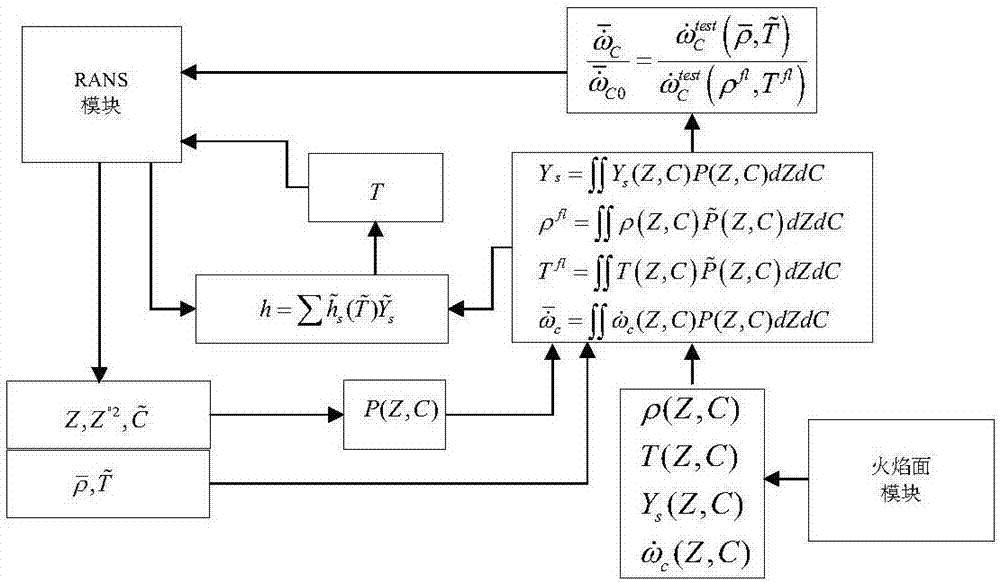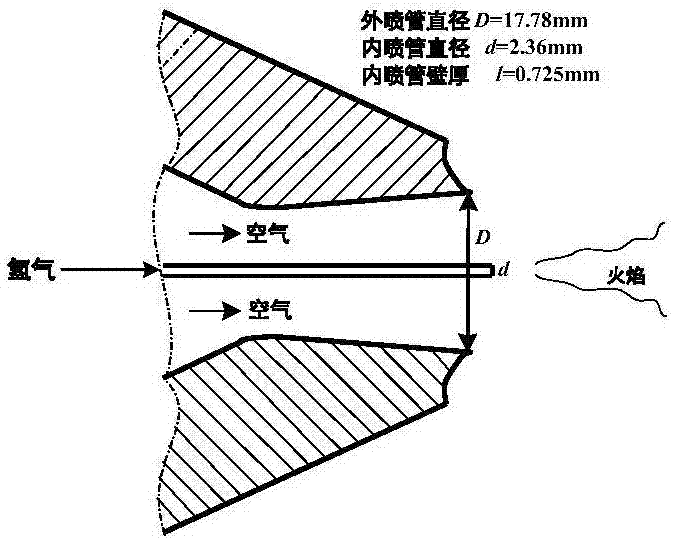Flame surface/progress variable model-based supersonic turbulent combustion flow calculation method
A calculation method and supersonic technology, applied in the field of computational fluid dynamics, can solve the problems of flame surface/progress variable compressible correction and other problems
- Summary
- Abstract
- Description
- Claims
- Application Information
AI Technical Summary
Problems solved by technology
Method used
Image
Examples
Embodiment
[0067] Using the new supersonic turbulent combustion flow calculation method based on the flame surface / progress variable model proposed by the present invention, for Fig. 2 and Image 6 The two calculation examples shown containing the experimental data of supersonic turbulent combustion were calculated and analyzed respectively. The experimental device used in Calculation Example 1 is as follows: figure 2 As shown, hydrogen is injected into the air through concentric tubes to form a supersonic axisymmetric diffusion combustion flow. Air flow conditions are: Mach number 2, temperature 1250K, pressure 107kPa; hydrogen incident velocity is the speed of sound. Figure 3 first shows the temperature cloud images obtained by different calculation methods. Among them, SF model is a traditional flame surface model calculation method, RIFmodel is an interactive flame surface model calculation method, and FPV model is a calculation method proposed by the present invention. The RIF m...
PUM
 Login to View More
Login to View More Abstract
Description
Claims
Application Information
 Login to View More
Login to View More - R&D
- Intellectual Property
- Life Sciences
- Materials
- Tech Scout
- Unparalleled Data Quality
- Higher Quality Content
- 60% Fewer Hallucinations
Browse by: Latest US Patents, China's latest patents, Technical Efficacy Thesaurus, Application Domain, Technology Topic, Popular Technical Reports.
© 2025 PatSnap. All rights reserved.Legal|Privacy policy|Modern Slavery Act Transparency Statement|Sitemap|About US| Contact US: help@patsnap.com



